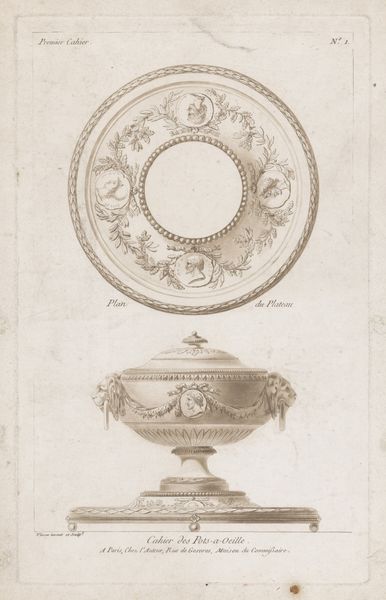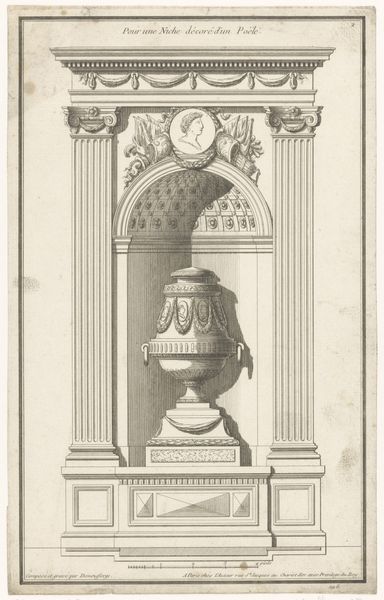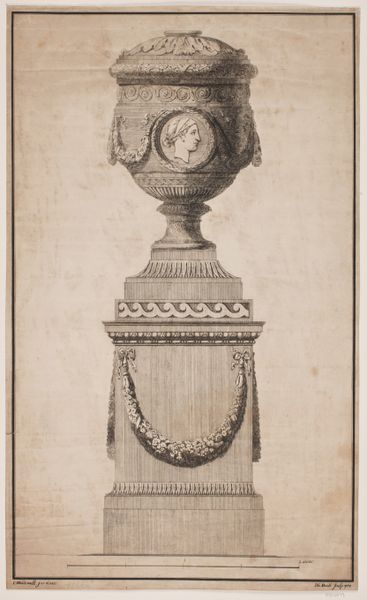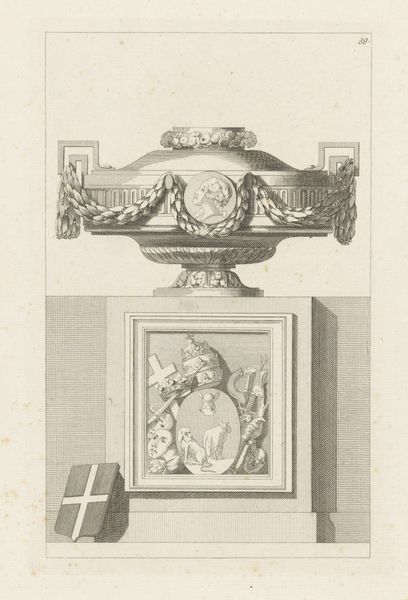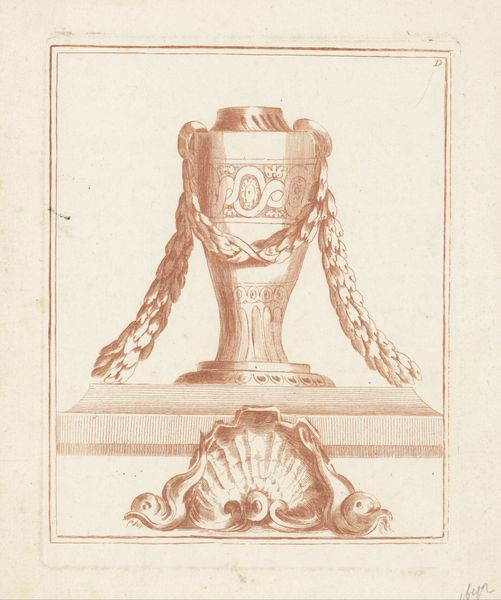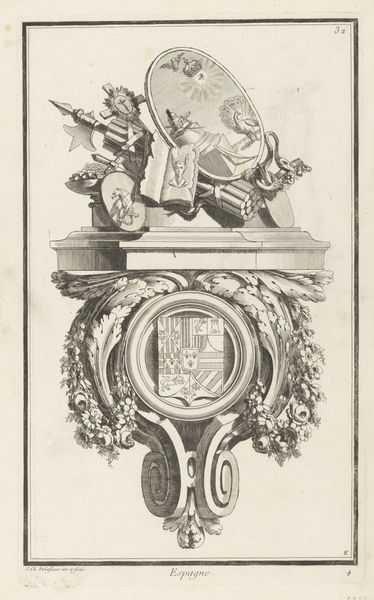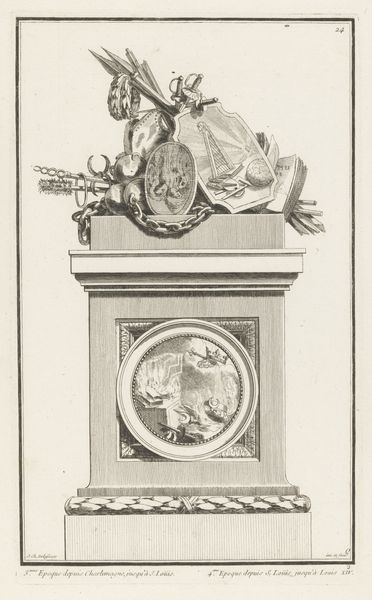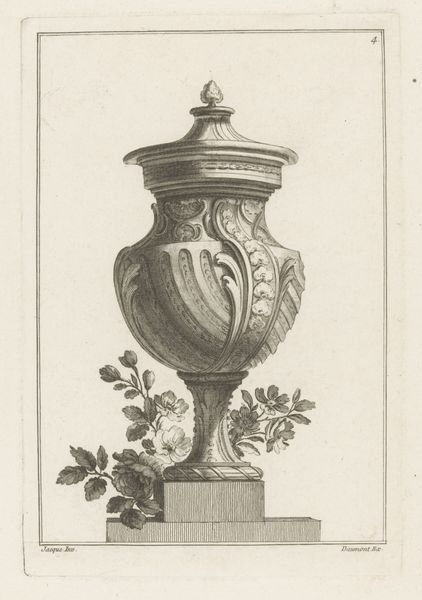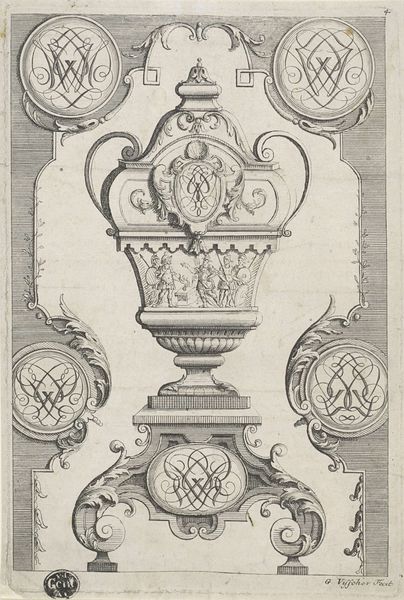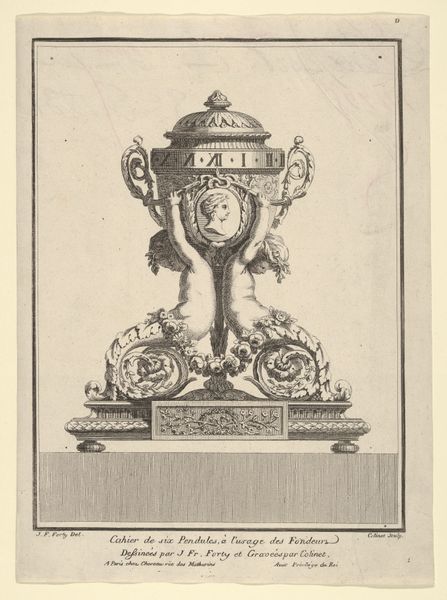
drawing, print, engraving
#
portrait
#
drawing
#
neoclacissism
# print
#
old engraving style
#
geometric
#
history-painting
#
engraving
Dimensions: height 133 mm, width 94 mm
Copyright: Rijks Museum: Open Domain
This line engraving of a vase with a male bust was made by an anonymous artist in 1768. The image is achieved through the technique of engraving, where lines are incised into a metal plate, which is then inked and printed onto paper. Engraving demands high levels of skill. The artist uses tools to physically cut into the metal, controlling the depth and spacing of the lines to create tone and texture. This is a labour-intensive process, requiring patience and precision. The image has a crispness of line and a remarkable level of detail, which allows for the depiction of textures such as the laurel leaves on the top of the vase, and the shading that models the man's face. Consider too that printmaking in this period was not just an artistic technique, but also a means of mass production. Prints could be circulated widely, disseminating images and ideas to a broad audience. So, while this engraving may depict a unique object, it is itself a product of a larger system of production and consumption, and the work is not considered more 'high art' than 'craft'.
Comments
No comments
Be the first to comment and join the conversation on the ultimate creative platform.
